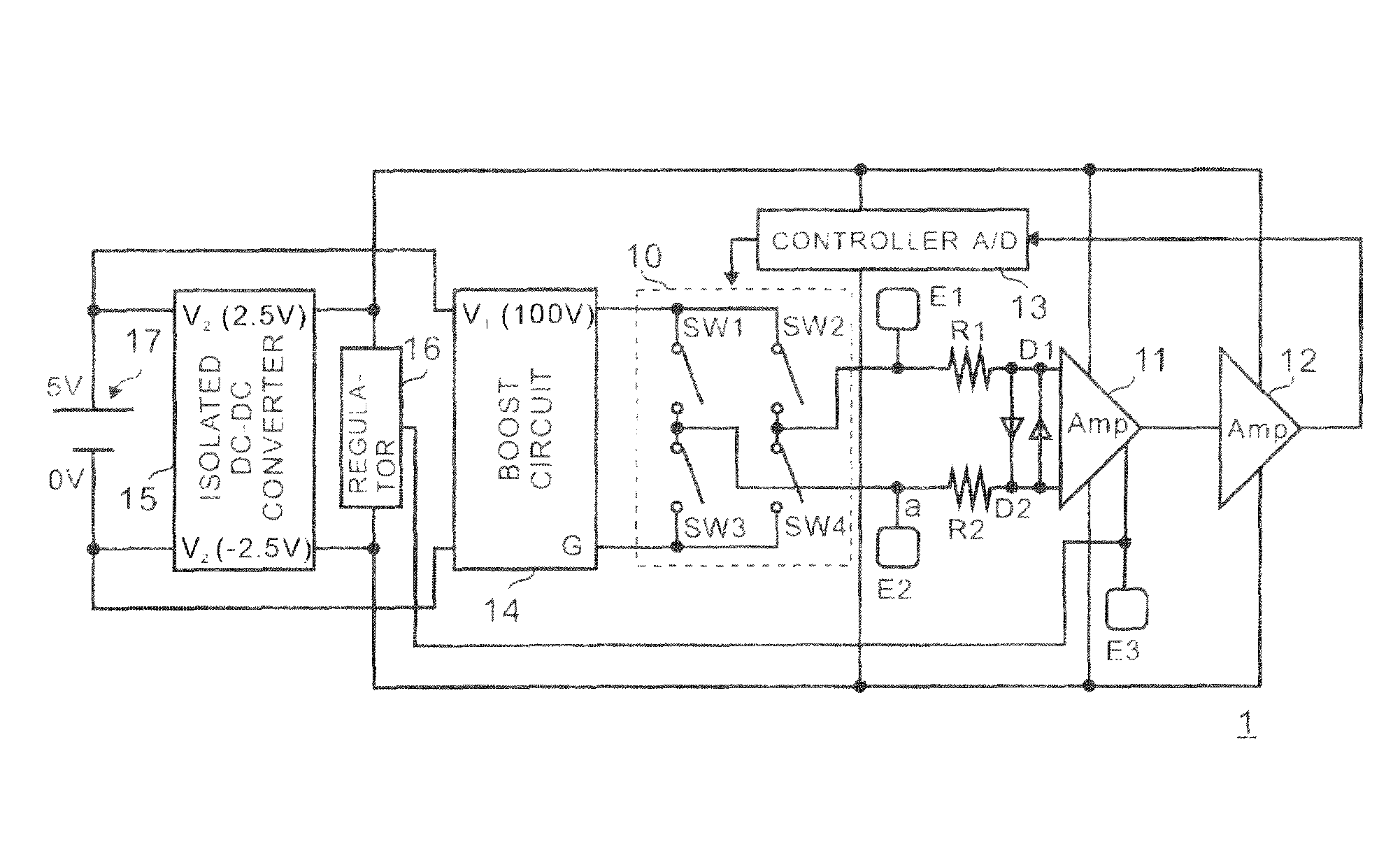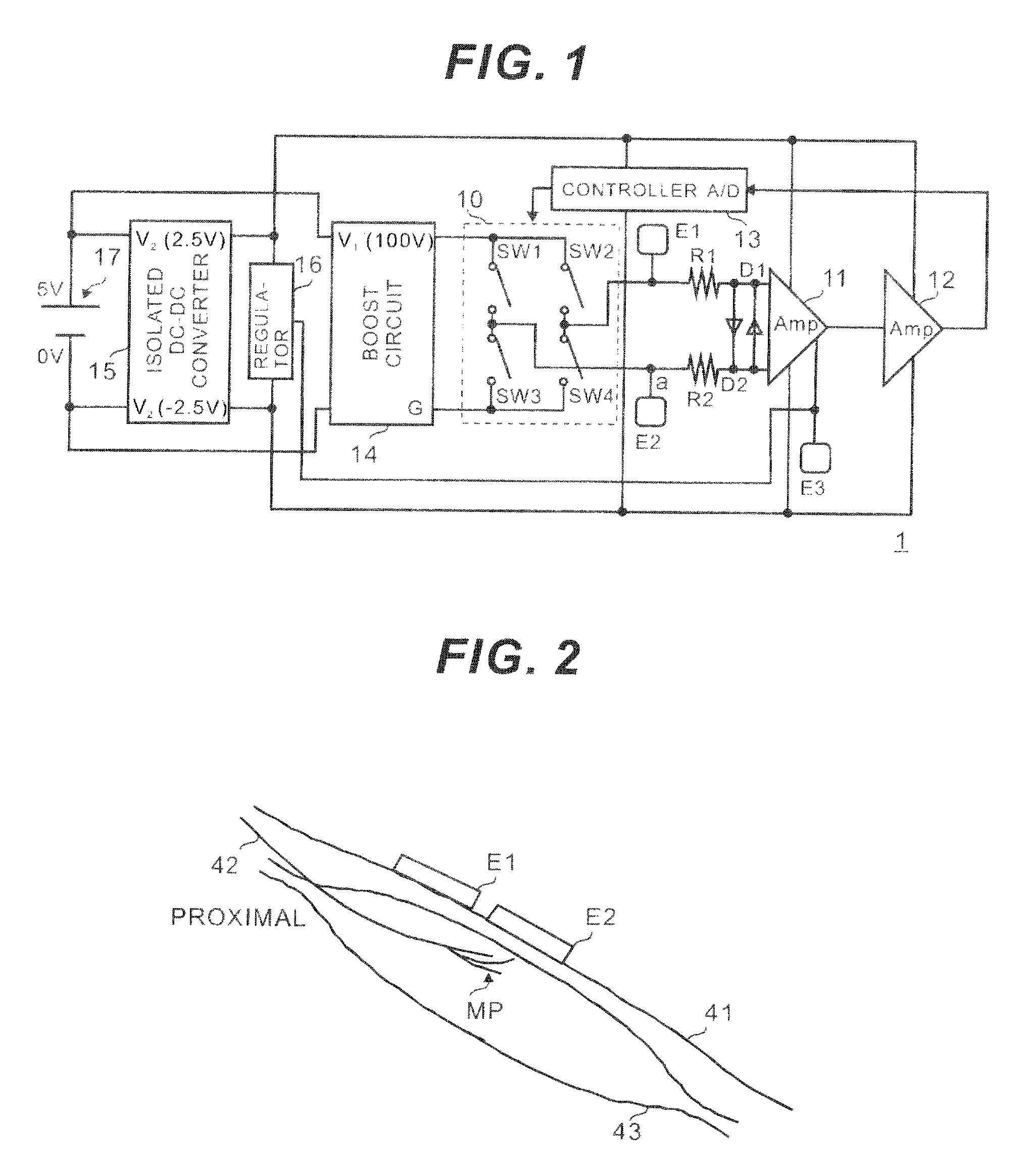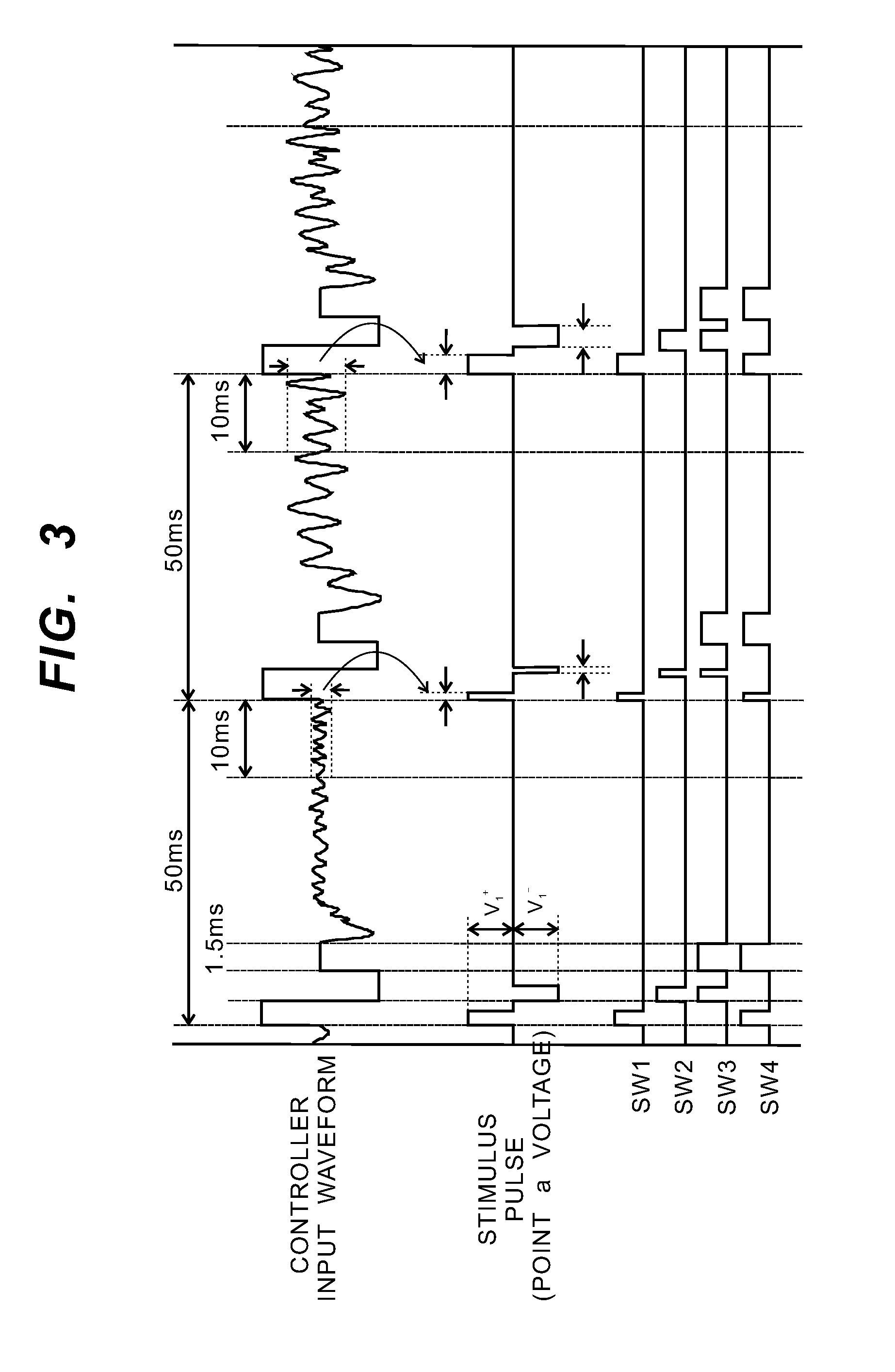Electrostimulator capable of outputting stable electric stimulus
a technology of electric stimulus and electrostimulation, which is applied in the field of electrostimulation, can solve the problems of difficult walking difficult dorsiflexion of ankle joints for patients with drop-foot, etc., and achieve the effect of stable voluntary myoelectric potential and stable electric stimulus
- Summary
- Abstract
- Description
- Claims
- Application Information
AI Technical Summary
Benefits of technology
Problems solved by technology
Method used
Image
Examples
first embodiment
[0046]FIG. 1 is a circuit diagram showing a structure of an electrostimulator 1 according to the present invention.
[0047]The electrostimulator 1 mainly consists of an isolated DC-DC converter 15, electrodes E1, E2 and E3, protective resistors R1 and R2, diodes D1 and D2, an instrumentation amplifier 11, a multi-step amplifier 12, a controller 13, a boost circuit (step-up circuit) 14, an H-bridge circuit 10 and a regulator 16.
[0048]A high voltage (100V) is obtained by boosting an output of a battery (5V) 17, and simultaneously the battery (5V) 17 supplies power to the amplifiers 11 and 12 and the controller 13 via the isolated DC-DC converter 15. Moreover, a reference voltage is generated by the regulator 16.
[0049]In this embodiment, My Battery Lite manufactured by Japan Trust Technology, INC. is used as the battery 17. The battery 17 is not limited to that product but various types of batteries such as an external battery used for a mobile phone can be used. The electrostimulator 1 ...
second embodiment
[0082]FIG. 5 is a circuit diagram showing a structure of an electrostimulator 2 according to the present invention.
[0083]The second embodiment is different from the first embodiment in that the electrodes E1 and E2 functions only as recording electrodes and electrodes E5 and E6 are added as stimulus electrodes. Other structures are similar to the first embodiment and so the explanations for those will be omitted.
[0084]In this embodiment also the stimulus is not applied to the electrode E3, and so stable output of the stimulus can be obtained by supplying the high voltage continuously.
[0085]In the second embodiment, the detection of the voluntary myoelectric signal and application of the electric stimulus can be performed on the different positions (on different muscles including muscles of other person). For example, in case of using the electrostimulator 2 according to this embodiment for a patient with facial nerve paralysis, the electrodes E1 and E2 can be disposed on a normal si...
third embodiment
[0087]In the electrostimulator 3 a diac D3 (fifth switch) is connected between the common terminal of the photoMOS relays SW2 and SW4 and the electrode E4, and a diac D4 (sixth switch) is connected between the common terminal of the photoMOS relays SW2 and SW4 and the electrode E5. Moreover, the electrode E6 disposed on a skin surface is connected to the common terminal of the photoMOS relays SW1 and SW3, to the reference terminal of the amplifier 11 and to the output terminal of the regulator 16. By using diacs for the fifth and sixth switches, the electrostimulator 3 is further miniaturized.
PUM
 Login to View More
Login to View More Abstract
Description
Claims
Application Information
 Login to View More
Login to View More - R&D
- Intellectual Property
- Life Sciences
- Materials
- Tech Scout
- Unparalleled Data Quality
- Higher Quality Content
- 60% Fewer Hallucinations
Browse by: Latest US Patents, China's latest patents, Technical Efficacy Thesaurus, Application Domain, Technology Topic, Popular Technical Reports.
© 2025 PatSnap. All rights reserved.Legal|Privacy policy|Modern Slavery Act Transparency Statement|Sitemap|About US| Contact US: help@patsnap.com



